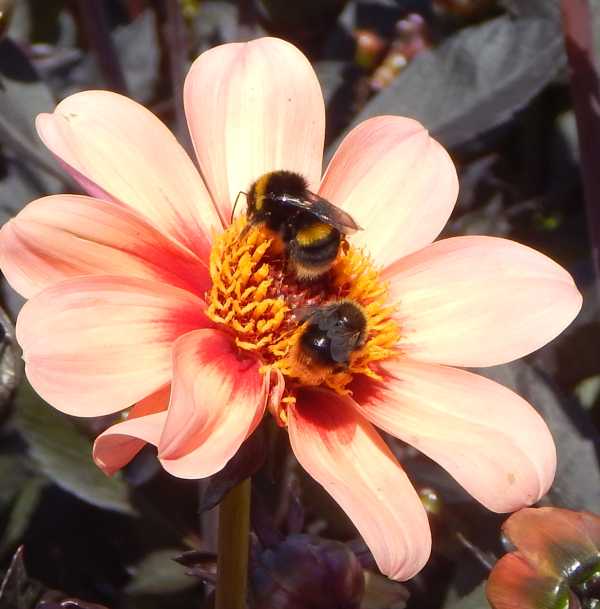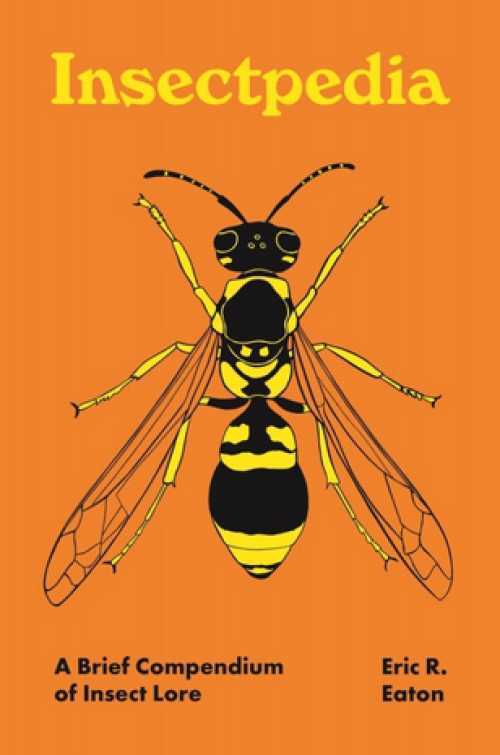Are Bees Born Fully Grown?
No, bees are not born fully grown.
A bee is born as a larva (from an egg), and not a fully developed bee. A further life cycle stage as a non-feeding pupa will also occur before the fully grown and recognizable adult bee emerges.
Metamorphosis In Bees
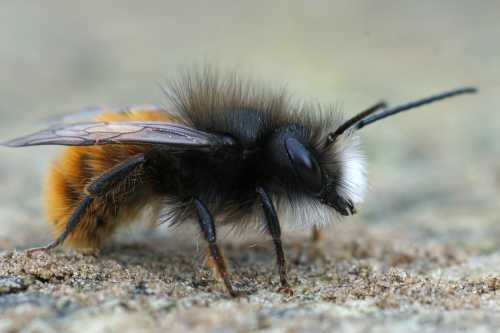 European Orchard Mason Bee - Osmia cornuta
European Orchard Mason Bee - Osmia cornutaLike other insects, bees go through metamorphosis.
Metamorphosis is a process of dramatic physical change as the species develops from birth to adult, such that the newly born young look completely different from the fully grown adult.
The difference in appearance between the newly born young and adult is so striking, that in isolation, it might be thought they are different species altogether.
How are bees born and how do they grow into adults?
This question is covered in detail in my page covering the life cycle of bees.
However, a bee is born from an egg laid in a cell provided by an adult. The egg hatches into a larva which looks like a little white grub, and not at all like the bee it will turn into.
The larva feeds and then develops into a non-feeding pupa. After a short while as a pupa, it will emerge as a fully grown and recognisable adult bee.
This type of insect life cycle is called holometabolous.
Why do bees have a holometabolous life
cycle?
It is thought that at one time, all insects went through a simple process of development (termed 'ametabolous') in which newly born, young insects change little in appearance as they grow into an adult.
Some insect species still develop in this way, such as the silverfish (Zygentoma) and jumping bristletails (Archaeognatha).
In these species, the adult and young are similar in appearance, but the adult continues to moult in alternation with bouts of reproduction.
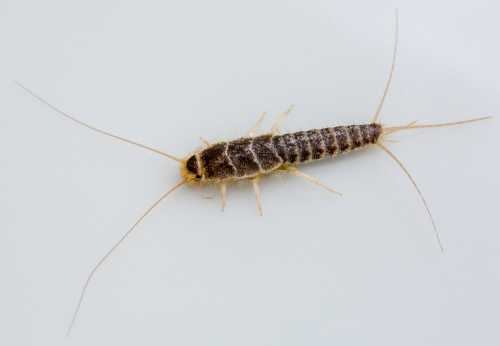 Silverfish (Zygentoma) go through a simple process of development
Silverfish (Zygentoma) go through a simple process of developmentSo why did the life cycle of bees take a different path?
It is thought that the life cycles of most insects evolved in response to their
environments, and to help ensure success of the species.
The particular type of life cycle seen in bees (holometabolous) arose about 350million years ago.
The main advantage this type of life cycle for bees as species, is that the young eat different foods from adults, therefore reducing competition for food between adults and the offspring.
Adult bees mostly eat nectar, whereas the offspring eat primarily pollen. This also helps ensure the adults don’t consume the food provisions intended for the young, and vice versa.
The way in which the adult and larva interacts with its environment also differs. Whilst a larva and then a pupa, the young bee remains in an enclosed nest cell.
No legs or wings are needed, since all food is provided by the adult bees.
Adults on the other hand, are free to fly and forage away from the nest, and also provide for the young.
Other insect species operate in a different way from bees.
For example, butterflies also have a holometabolous life cycle, but the larva of the butterfly (actually the caterpillar) provides for itself, munching its way through leaves before it spins a cocoon and pupates.
Do All Bees Go Through Metamorphosis?
Yes, all bee species pass through the same stages of development, with a larva hatching from an egg. Larvae will then go through a process of metamorphosis, passing through the phase of pupa to adult.
Do Other Insects Have Similar Life Cycles To Bees?
Other insects (but not all) also have a holometabolous life cycle, even though their appearance is very different from bees. This means they also develop from larva, non-feeding pupa and then adult.
Bees belong in the same insect order (Hymenoptera) as wasps, ants and sawflies, all of which have a similar type of life cycle to the bee.
The other insect orders with a holometabolous life cycles include Trichoptera, Lepidoptera, Siphonaptera, Diptera, Mecoptera, Coleoptera, Neuroptera, Raphidioptera, Strepsiptera, Megaloptera.
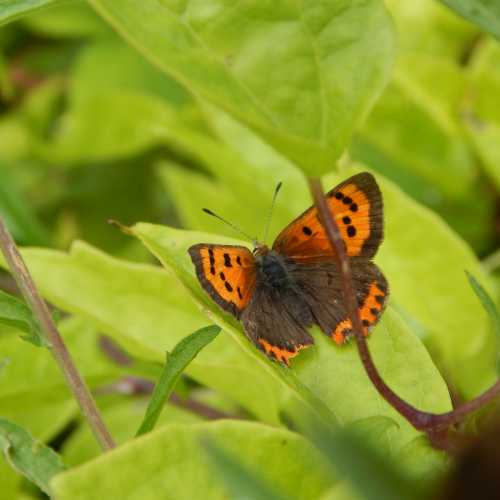 Small Copper Butterfly (Lycaena phlaeas)
Small Copper Butterfly (Lycaena phlaeas)You'll see from the table below that some well-known insect types are included within these families, including butterflies and moths:
| Insect Orders Sharing A Holometabolous Life Cycle | |
|---|---|
| Bees | Hymenoptera |
| Wasps And Hornets | |
| Ants | |
| Sawflies | |
| Butterflies | Lepidoptera |
| Moths | |
| Beetles | Coleoptera |
| Weevils | |
| True flies | Diptera |
| Mosquitoes | |
| Lacewings | Neuroptera |
| Antlions | |
| Scorpionflies | Mecoptera |
| Snakeflies | Raphidioptera |
| Fleas | Siphonaptera |
| Caddisflies | Trichoptera |
| Twisted-winged parasites | Strepsiptera |
| Dobsonflies | Megaloptera |
| Alderflies | |
Does Metamorphosis Only Happen In Insects?
Some vertebrate species also undergo metamorphosis.
For example, frogs and toads each develop from an egg and then into a tadpole before eventually transforming into a fully grown adult.
Some fish species also go through metamorphosis.
Resources
Truman JW, Riddiford LM. The evolution of insect metamorphosis: a developmental and endocrine view. Philos Trans R Soc Lond B Biol Sci. 2019 Oct 14;374(1783):20190070. doi: 10.1098/rstb.2019.0070. Epub 2019 Aug 26. PMID: 31438820; PMCID: PMC6711285.
